Physical Address
304 North Cardinal St.
Dorchester Center, MA 02124
Bursae are formed from synovial sacs that allow easy sliding of muscles and tendons across one another at areas of repeated movement. These synovial sacs are lined with a synovial membrane invested with a network of blood vessels that secrete synovial fluid. Inflammation of the bursa results in an increase in the production of synovial fluid with swelling of the bursal sac. With overuse or misuse, these bursae may become inflamed, enlarged, and, on rare occasions, infected. Although there is significant intrapatient variability as to the number, size, and location of bursae, anatomists have identified a number of clinically relevant bursae, including the ischial bursa, which lies between the gluteus maximus muscle and the bone of the ischial tuberosity. It may exist as a single bursal sac or in some patients as a multisegmented series of sacs that may be loculated.
The ischial bursa is vulnerable to injury from both acute trauma and repeated microtrauma. Acute injuries frequently take the form of direct trauma to the bursa from direct falls onto the buttocks and from overuse, such as prolonged riding of horses or bicycles ( Fig. 125.1 ). Running on uneven or soft surfaces such as sand also may cause ischial bursitis, which is also known as weaver’s bottom. If the inflammation of the ischial bursa becomes chronic, calcification of the bursa may occur.
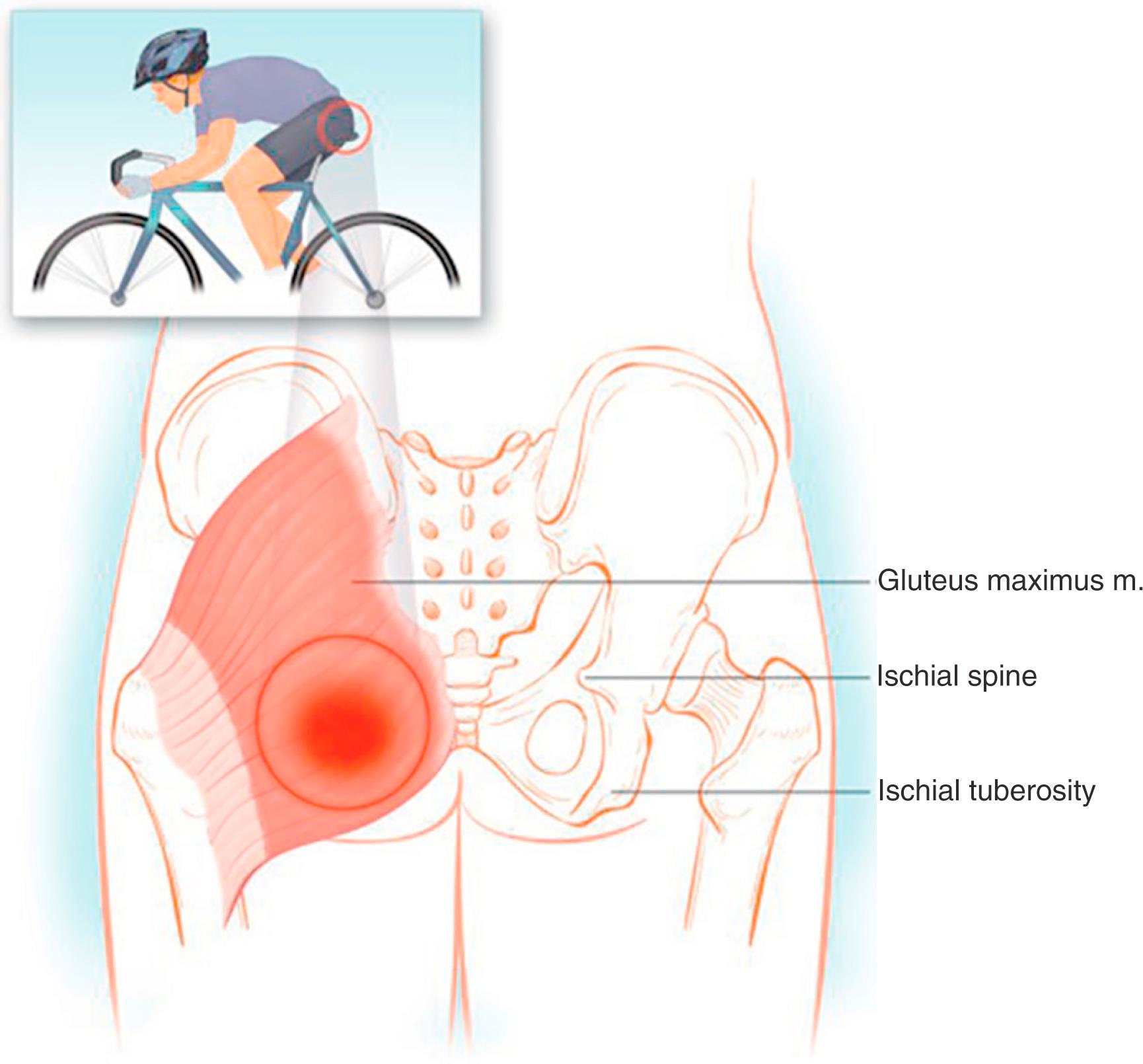
The patient with ischial bursitis frequently reports pain at the base of the buttock with resisted extension off the lower extremity. The pain is localized to the area over the ischial tuberosity, with referred pain noted into the hamstring muscle, which also may develop coexistent tendinitis. Often the patient is unable to sleep on the affected hip and may report a sharp, “catching” sensation when extending and flexing the hip, especially on first awakening. Physical examination may reveal point tenderness over the ischial tuberosity. Passive straight-leg raising and active resisted extension of the affected lower extremity reproduce the pain. Sudden release of resistance during such maneuvers markedly increases the pain ( Fig. 125.2 ).
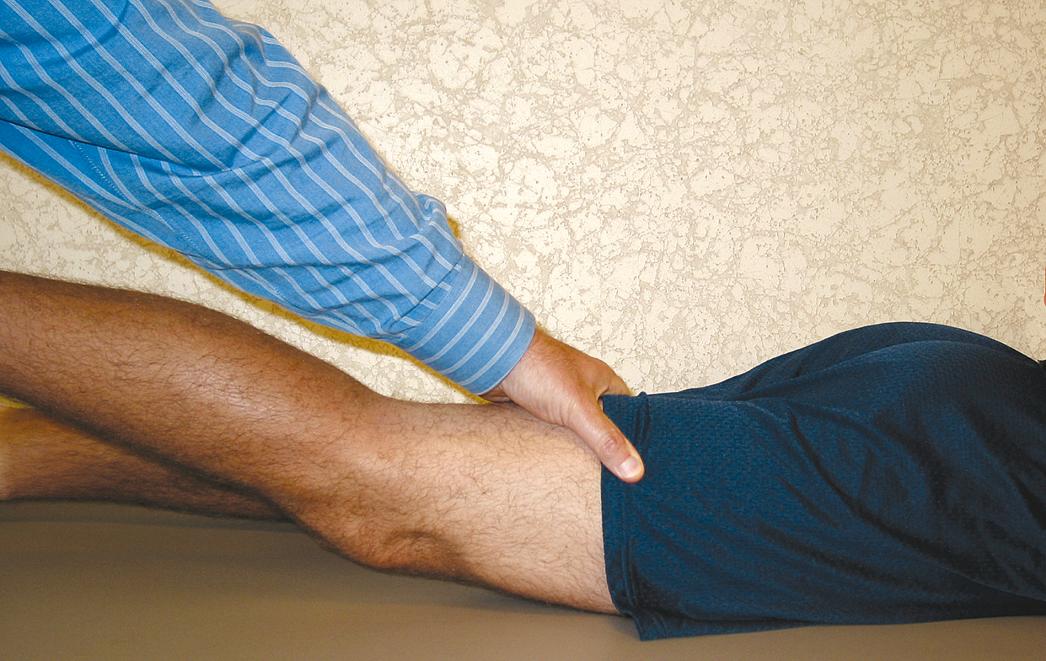
Plain radiographs or magnetic resonance imaging (MRI) of the hip may reveal calcification of the bursa and associated structures consistent with chronic inflammation ( Fig. 125.3 ). MRI and ultrasound imaging are also indicated to confirm disruption of the hamstring musculotendinous unit and to aid in diagnosis of ischial bursitis ( Fig. 125.4 ). The injection technique described later serves as both a diagnostic and a therapeutic maneuver and also treats hamstring tendinitis.
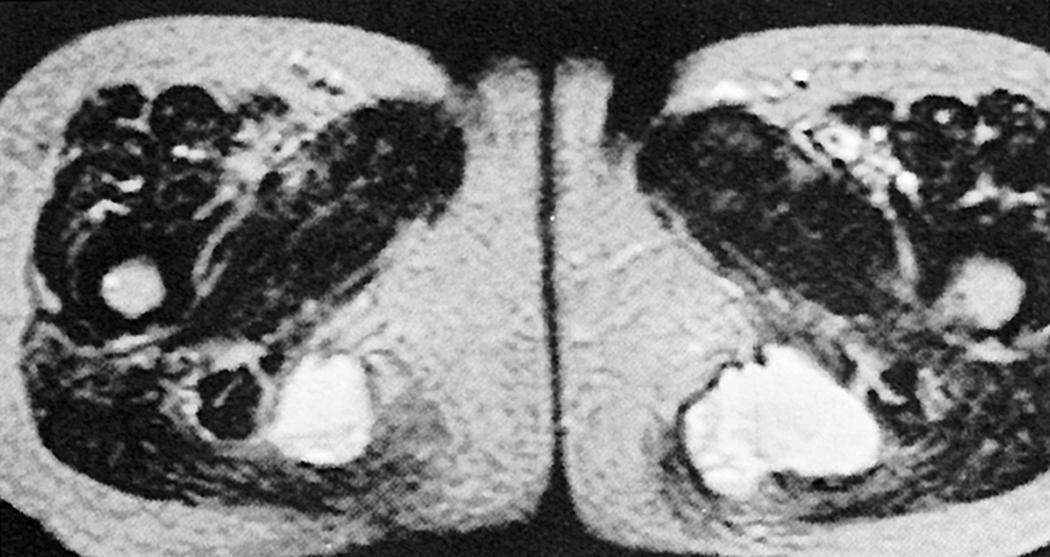
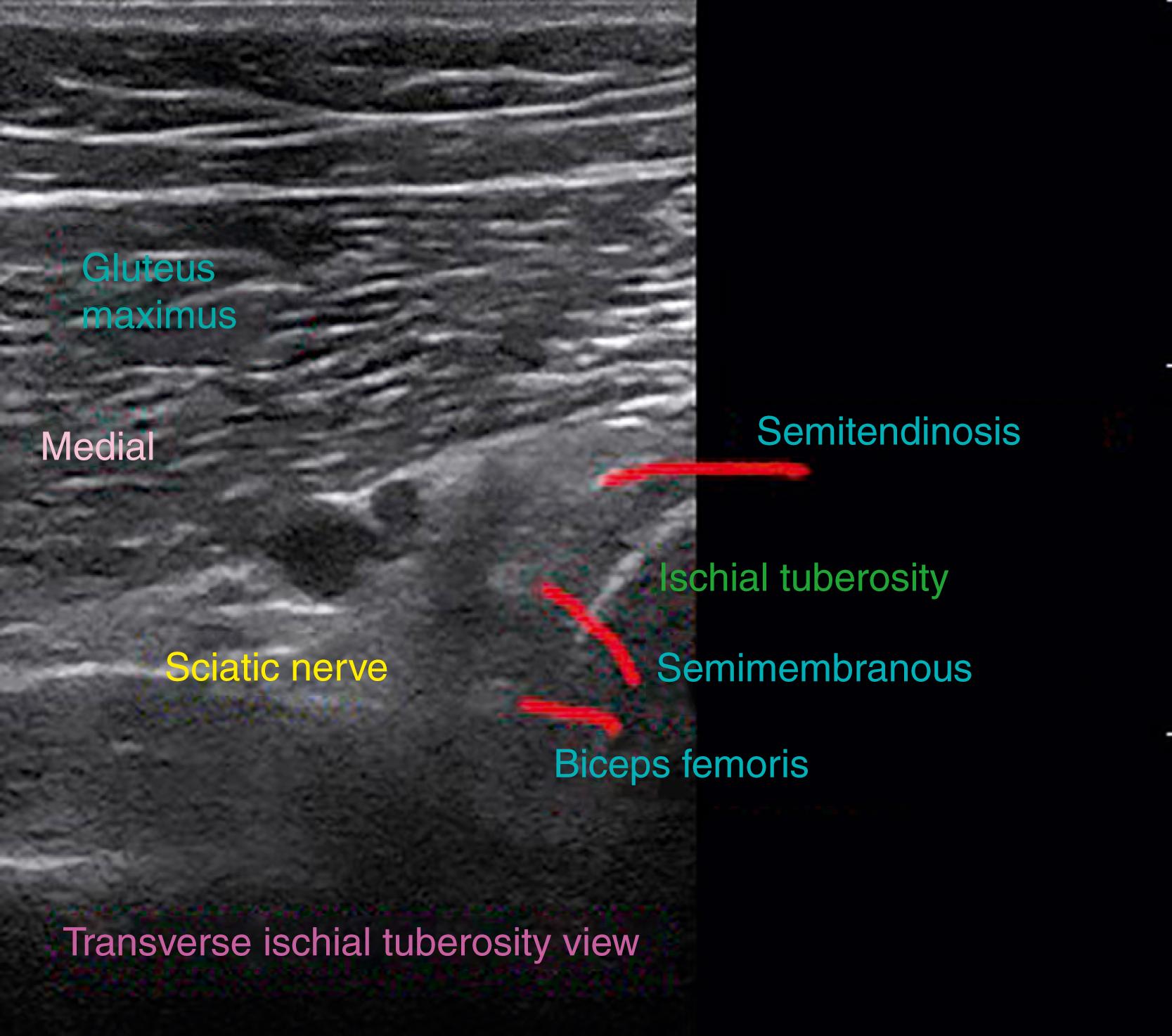
The ischial bursa lies between the gluteus maximus muscle and the ischial tuberosity ( Fig. 125.5 ). The action of the gluteus maximus muscle includes the flexion of trunk on thigh when maintaining a sitting position while riding a horse. This action can irritate the ischial bursa, as can repeated pressure against the bursa that forces it against the ischial tuberosity The hamstring muscles find a common origin at the ischial tuberosity and can be irritated from overuse or misuse. The action of the hamstrings includes flexion of the lower extremity at the knee. Running on soft or uneven surfaces can cause tendinitis at the origin of the hamstring muscles.
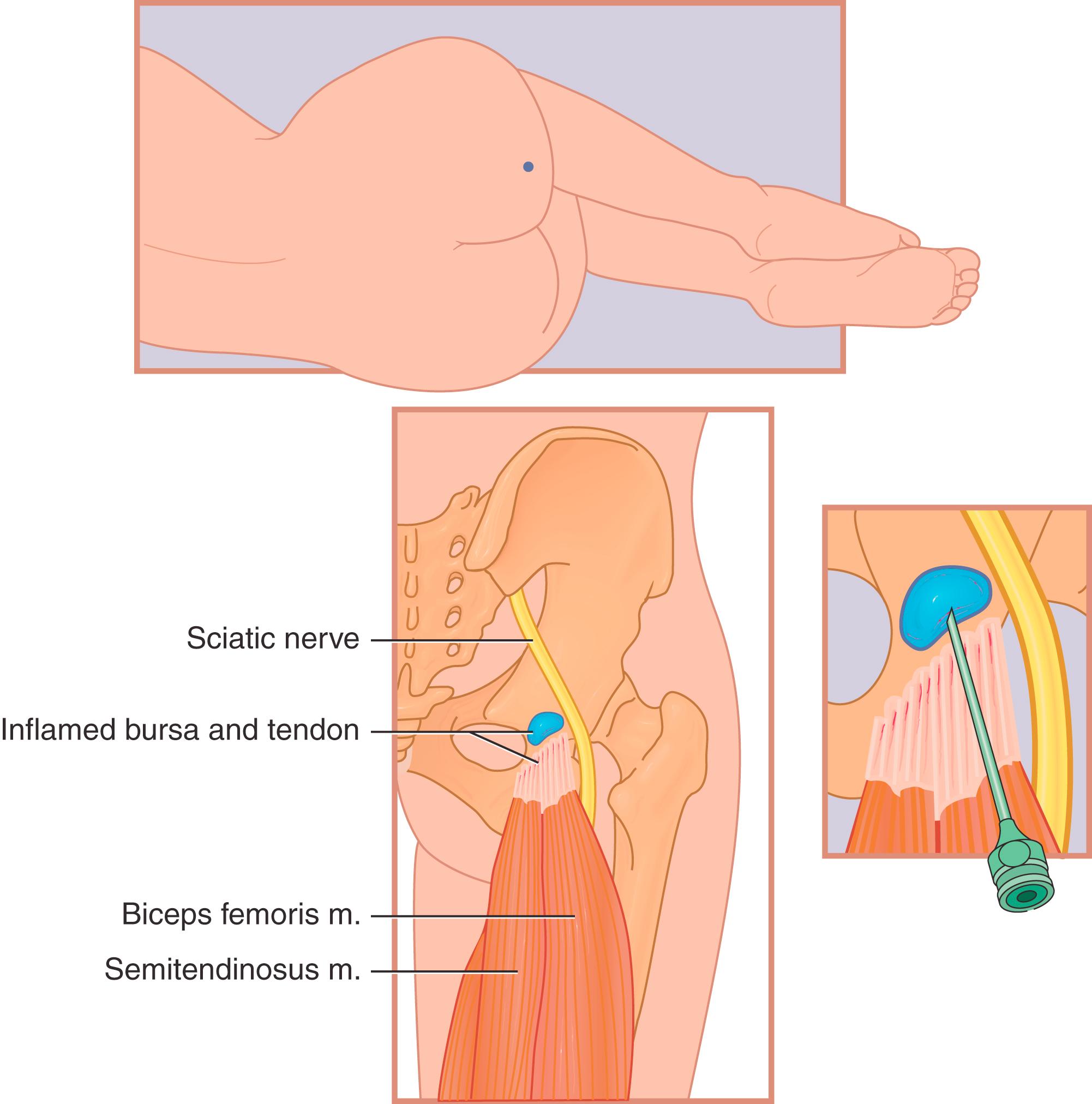
Become a Clinical Tree membership for Full access and enjoy Unlimited articles
If you are a member. Log in here